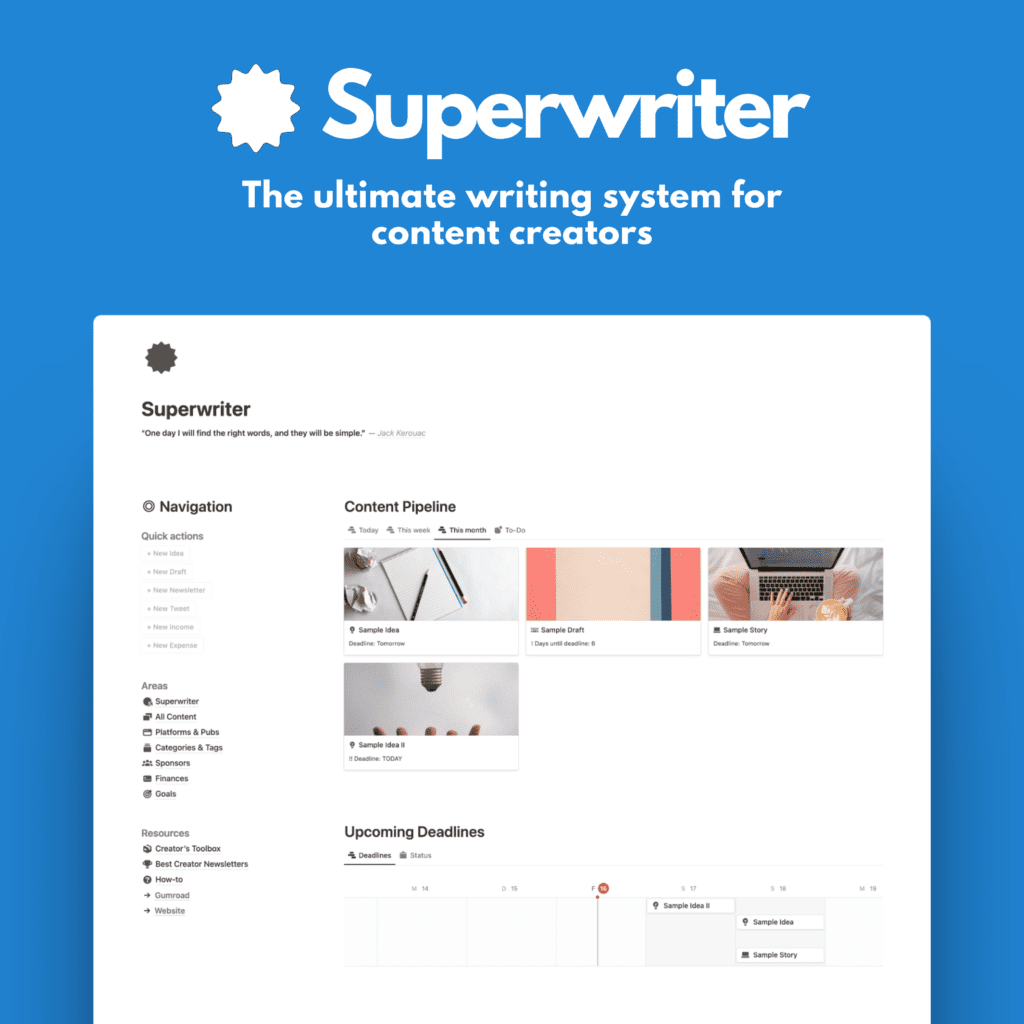As a frequent blogger, Substack & Medium writer, organizing and planning your content is key to improving your writing and growing your readership.
At least, in my opinion.
That’s where Notion comes in.
This powerful productivity tool can transform how you create, track, and analyze your written content.
What is Notion and Why Use It?
Notion is an all-in-one workspace that combines note-taking, project management, calendar, to-dos, and database features.
It’s free, easy to use, and endlessly customizable. For pro users, it also offers powerful automation features and its own AI assistant called Notion Ai, perfectly integrated into the platform. Pro plans start at $8 a month.
For online writers, Notion can be:
- A central database to store and track articles
- Options to view and organize content in different ways
- Insights into your writing patterns and performance
- A seamless writing and publishing workflow
With Notion, you can stop struggling to manage your content across multiple apps and websites.
Everything is in one place, allowing you to optimize your efforts.
Creating Your Content Database
The core of your Notion setup is a database for your posts. This can be as complex or as simple as you like it.
Here’s an overview of how to build a simple table one (from my own setup).

The steps:
- Create a new table database in Notion named “Writing”
- Add columns for important details like title, tags, status, date published, etc.
- Make key columns like Platform and Status multi-select fields
- Add checkbox columns for Curated and Viral to track top performance
Customize your database to what makes sense for your writing process. The goal is capturing all the details on each post relevant to analyzing and improving your writing output & online presence.
Getting More Out of Your Database
The database alone is useful, but Notion views take it to the next level. Create customized views to plan, organize, and review your content.
- Calendar view to map your publication schedule
- Gallery view to visually browse posts
- Kanban board to manage article status from idea to draft to published


Notion’s filtering and sorting allow you to segment your posts in any way.
Identify your top-performing content, analyze trends, uncover knowledge gaps, and more.
The insights will help you grow as a writer.
Bonus: Top Writer Tag Database
Want an added edge for writing on Medium?
Create a database of all Medium’s Top Writer tags with stats like:
- Competition rates from low to high
- Number of writers for each tag
- Checkboxes to track tags you’ve achieved
Refer to this database when choosing tags for new posts to select ones where you can more easily rank.
The Notion Writing Workflow
With your Notion database setup, integrate it into your entire Medium process:
- Brainstorm article ideas and add them to your database
- Use linked Notion pages to write drafts of posts
- Add status tags and other details as you finalize content
- Drag and drop pieces into your publication calendar
- Click published post links to easily access and share
- Review metrics and patterns to inform future content
Notion streamlines your writing workflow from start to finish.
You get organization, insights, and time savings through having a central hub.
Recap: How Notion Boosts Writing
Transitioning from a casual to professional writer requires content management.
Notion provides the platform to:
- Store all your posts, ideas, and details in one place
- Structure and schedule content for consistency
- Analyze writing patterns and performance
- Optimize your efforts based on data and insights
- Generally work faster and more efficiently
The best part is that Notion is completely free (unless you want the pro plan features like automation and AI). I still the use the free version.
With some setup time, it can take your writing game to the next level.
If you want to take a look at my existing Notion templates, you can find the Medium Content Planner here, and the Medium Top Writer Tag List here.
And if you want the most complex writing template for Notion, you can check out Superwriter.









